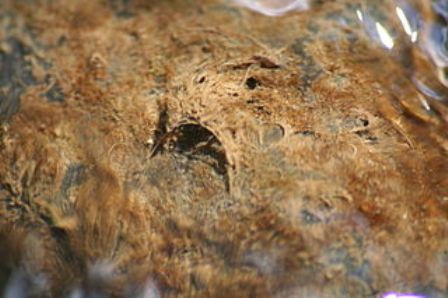Nutrition
With H. betteni classified as a
species of the net-spinning caddisfly, an explanation of that
common name is needed. The aquatic larvae of H. betteni
are able to release silk through their mouths via special
salivary glands. After the larvae hatch, they build a net using
the silk, attaching it to rocks located in faster flowing
streams/rivers. Smaller plant material, sand, and pebbles are
also "woven" into this net to serve as a hiding place for the
larvae (Fowler).
These nets are essentially used to filter out different food
particles and small organisms from the running water in which
the larvae can feed on. The contents that the larvae then feed
on consist of small plants, algae, immature aquatic insects,
diatoms, and a few other smaller food particles (Fowler).
As the larvae increases in size, it constructs the net to a
larger size as well. Eventually the larvae become fully grown,
which leads to the next stage in its life (see
Reproduction/Life Cycle).
